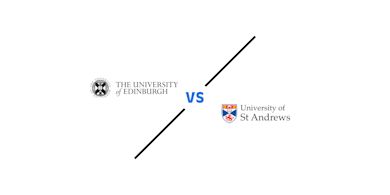- 10 min
- Published: 22 August 2025
- Updated: 21 August 2025
Many international students dream of studying at top US universities like Harvard or Stanford. However, the cost of education and visa restrictions can make this route challenging. Moreover, after graduation, international students typically get only 1 year of work authorisation (OPT; extendable to 3 years for STEM graduates) before needing a H-1B visa.
Fortunately, countries like the UK, Australia, Canada, Ireland and New Zealand also offer top-ranked universities. Plus, students get other benefits like lower costs, welcoming student cities, and strong post-study work pathways.
This guide compares globally recognised universities in these destinations with well-known US institutions, helping you explore high-quality, value-for-money alternatives.
Alternatives to Harvard University
Why students choose Harvard
Harvard University is known worldwide for its academic excellence and prestigious alumni network. But it’s also one of the most expensive universities in the US (often around $50,000+ per year for undergrad) and financial aid for international students is extremely competitive.
Strong alternatives:
The University of Melbourne (Australia)
The University of Melbourne is renowned for programs in law, business, medicine, and arts, similar to Harvard’s strengths. It has a diverse student body with 45% international students from 150+ countries, ensuring a global campus culture. Other key features:
#1 in Australia and #19 globally
Tuition fees about AUD 20,000–45,000 ($12,840-28,891) per year for most programs.
2–3 year post-study work visas, plus permanent residency pathways.
Melbourne ranked #5 in QS Best Student Cities 2025.
University of Oxford (UK)
Oxford is one of the world’s oldest and most prestigious universities, often seen as the UK equivalent of Harvard in stature. It excels in law, philosophy, politics, business (MBA), humanities and more. Key highlights include:
Ranked #4 globally (QS 2026).
Annual undergraduate tuition ranges from £10,000 to £30,000($13,436-40,308) – significantly less than top US universities (and degrees are shorter in duration).
3-year undergrad and 1-year master’s programs save time and money.
2-year post-study work visa in the UK (3 years for PhD).
Near London, providing access to top careers and alumni networks.
McGill University (Canada)
McGill University in Montreal offers world-class programs in medicine, law, business, and sciences, mirroring Harvard’s broad academic excellence. It’s often dubbed the “Harvard of Canada” and boasts a diverse student community; international students from 150+ countries make up nearly 30% of its enrolment. Beyond prestige, McGill is more affordable and Montreal’s dynamic, bilingual city life adds to its appeal. Key highlights include:
Ranked #27 globally (QS 2026).
International undergraduate tuition is roughly around CAD $40,000 ($29,055) per year – substantially lower than Harvard’s.
Up to 3-year post-graduation work permit in Canada, plus pathways to permanent residency.
Montreal is consistently rated among the world’s top student cities (#10 at QS Best Student Cities 2025) and offers a vibrant, multicultural lifestyle at a lower cost of living than Boston/Cambridge.
Exploring these alternatives can provide you with high-quality education and valuable international experience at a more affordable cost.
Join the IDP student community
Connect with peers and student ambassadors to hear real experiences, tips, and advice about studying abroad.

Alternatives to Stanford University
Why students choose Stanford
Many students are drawn to Stanford University for its prime location in Silicon Valley and its leadership in tech, engineering and entrepreneurship. The university’s strong industry ties mean that students often have direct pathways into companies like Google, Apple, and numerous start-ups.
However, the high tuition costs (graduate programs can cost $50,000–$60,000 per year without aid) and the steep cost of living in California can be significant barriers.
Strong alternatives:
UNSW Sydney (Australia)
The University of New South Wales (UNSW Sydney) is one of Australia’s top technical universities, renowned for its programs in engineering, AI, fintech, computer science, and business programs, much like Stanford.
UNSW’s engineering faculty is known for its extensive research output and partnerships with industry. Alumni and researchers have driven innovation in renewable energy, AI, and fintech. Also, Sydney’s high quality of life, diverse community, and strong economy make it an attractive alternative for tech-focused students.
Highlights include:
Ranked #20 globally (QS 2026).
Located in Sydney’s fast-growing tech ecosystem.
Lower fees, roughly AUD 30,000–45,000 ($19,260-28,891) per year, and generous post-study work rights in Australia.
University of Cambridge (UK)
The University of Cambridge combines a world-leading engineering and computer science school with the charm of a historic college town. Cambridge produces cutting-edge research in fields like artificial intelligence and biotechnology and has spawned a tech cluster known as “Silicon Fen” around the university. For a student eyeing Stanford’s blend of academia and start-up culture, Cambridge offers a similar environment with tech incubators and R&D centres nearby. Key points include:
Ranked #6 globally (QS 2026).
Degrees respected worldwide, with a 2-year graduate work visa in the UK.
Lower undergrad fees of around £27,000-41,000 ($36,278-55,088) per year.
One hour from London’s fintech district, providing industry exposure.
University of Waterloo (Canada)
The University of Waterloo is Canada’s premier innovation university, renowned for its computer science, engineering, and technology programs. It operates the world’s largest co-operative education program, with over 20,000 students alternating academic terms with paid work experience, often at top tech firms. Over 22% of undergrads and 40% of graduate students are international, creating a diverse campus culture. Located in the Toronto–Waterloo tech corridor (nicknamed “Silicon Valley North”), the university offers abundant job opportunities, allowing students to connect with startups and global companies. Key highlights include:
Globally recognised in tech fields – ranked #33 in the world for Computer Science and Information Systems.
Tuition for international undergrads is approximately CAD $45,000 ($32,687) per year, lower than Stanford’s, and living costs are more affordable.
Up to 3-year Canadian work permit after graduation.
Alternatives to New York University
Why students choose NYU
New York University is a popular choice among students due to its location and strong programs in business, media and arts. NYU is famous for its Stern School of Business (finance and business), Tisch School of Arts (performing arts), and its global network of campuses. The appeal lies in New York’s unmatched energy, diversity, and professional opportunities, with internships on Wall Street, cultural institutions, and media/tech companies at your doorstep. However, tuition fees ($55,000+ per year for undergrad) and living costs in NYC are among the world’s highest.
Strong alternatives:
University of Sydney (Australia)
Sydney is often likened to New York for its status as a global city. As Australia’s largest city and financial capital, it offers a vibrant cultural scene and iconic skyline. The University of Sydney is Australia’s oldest university and excels in business, law, medicine, arts, and IT among other fields. Notable features include:
Ranked #25 globally (QS 2026).
Tuition fees around AUD 50,000 ($32101) per year for undergrad programs.
Sydney consistently ranks among the world’s most liveable cities.
2–3 year post-study work visas in Australia; strong job placement for graduates.
Sydney ranked #6 in best student city worldwide (QS Best Student Cities 2025).
Trinity College Dublin (Ireland)
Trinity College Dublin isn’t just about humanities; it also hosts one of Ireland’s top computer science and engineering faculties. Trinity’s computer science school is known for research in areas like data science and software engineering, and the university has partnerships with leading tech companies in Dublin’s “Silicon Docks.” Dublin provides a lively backdrop with theatres, music, and a friendly community. It’s like a smaller, more relaxed version of New York’s cultural mix. Key points include:
Ireland’s top-ranked university (#75 globally, QS 2026).
Tuition fees for undergraduate courses can range from €13,000-37,000 ($14934-42,505) per year.
City-centre campus in a vibrant European capital.
Dublin is a major hub for tech and finance companies (“Silicon Docks” district).
Up to 2-year post-study work visa in Ireland for international graduates.
Dublin ranked #32 in best student city worldwide (QS Best Student Cities 2025).
University of Toronto (Canada)
The University of Toronto offers an urban campus experience comparable to NYU’s, right in the heart of Canada’s largest city. The University of Toronto is Canada’s highest-ranked university, excelling in business, finance, computer science, arts and more. Toronto’s dynamic economy (from Bay Street finance to a booming tech scene) gives students access to internships and career connections across multinational companies and cultural institutions in the city. Over a quarter of students are international, from 160+ countries, creating a cosmopolitan campus culture. Toronto is considered Canada’s financial and cultural capital, often compared to NYC for its diversity and opportunities. Key highlights include:
Ranked #29 globally (QS 2026).
International tuition is about CAD $60,000 ($43,583) per year, lower than NYU’s fees for foreign students.
Up to 3-year post-graduation work permit in Canada, plus straightforward immigration pathways.
Toronto is ranked #11 in best student city worldwide (QS Best Student Cities 2025).
Alternatives to University of California, Los Angles (UCLA)
Why students choose UCLA
University of California, Los Angeles, is often considered a “Public Ivy” for delivering elite education at a lower cost than private Ivy League schools. It’s renowned for its strong academic reputation, cutting-edge research, a vibrant campus life.
Its location in Los Angeles gives students exposure to industries from entertainment to technology. However, for international students UCLA’s tuition price tag is quite high (around $43,000 per year, with total annual costs often exceeding $70,000).
Also, US work visas after graduation are limited. The good news is that you can find the same Ivy-level quality abroad at a fraction of the cost, with more generous post-study work opportunities.
Strong alternatives:
University of Auckland (New Zealand)
The University of Auckland’s strong global ranking and comprehensive course offerings (from health science, commerce and management to creative arts and engineering) make it a solid all-round alternative. It has particularly strong ties with industry through internships and a Career Development Office that engages local employers. Besides, Auckland is New Zealand’s biggest city, offering a vibrant multicultural vibe. Advantages include:
#65 global (QS 2026) ranking.
Auckland is ranked #24 in best student city worldwide (QS Best Student Cities 2025).
Up to 3-year post-study work visa in New Zealand.
Undergraduate international tuition fees around NZ$ 40,000-48,000 ($24,165-28,291) per year.
Lower cost of living than most US or UK metro areas.
University of Canterbury (New Zealand)
The University of Canterbury is known for its engineering and IT programs. It has specialised research centres in areas like civil engineering, computer graphics, and even aerospace. It can be considered an alternative to UCLA, especially for students seeking quality education in a more affordable and less crowded setting. Christchurch, where the university is located, brands itself as an innovation hub (“Silicon Plains”) with tech incubators and a rebuilding city infrastructure that attracts engineers and entrepreneurs. The university emphasises hands-on learning and industry internships, giving a practical edge to your education. Highlights:
Undergraduate tuition fees are moderate, around NZ$ 31,600-48,000 ($18,271-28,291) per year.
Christchurch offers a peaceful, affordable lifestyle for students.
“Silicon Plains” tech growth in the region supports career development for graduates.
Up to 3-year post-study work visa in New Zealand.
Significantly lower living costs compared to Los Angeles or other large US cities.
University of Limerick (Ireland)
The University of Limerick (UL) offers a campus-based experience with a strong focus on student life and career outcomes. Its standout co-op program includes an 8-month paid internship for most undergraduates (often leading to job offers). This is similar to UCLA, where students often benefit from internships. The university is known for strengths in engineering, computer science, sports science, and business. The modern campus sits along the River Shannon and boasts Ireland’s largest sports campus. While smaller than Los Angeles, Limerick is Ireland’s third-largest city, offering a safe, affordable, and close-knit student community. If UCLA’s appeal is a friendly campus and good career connections, UL offers a similar experience in an Irish setting, enhanced by Ireland’s rich culture and the hospitality of its people.
Tuition for international students might be around €12,000–€20,000 ($13,785-22,975) per year.
Ireland’s 2-year post-study work visa
The university’s graduates are considered highly employable (UL consistently ranks high in Ireland for graduate employment rate).
Top 4 reasons to consider studying outside the US
Lower tuition fees: Many UK, Australian, Canadian, Irish and NZ universities offer degrees at lower costs compared to top US universities.
Work rights after graduation: Enjoy 2–3 years (or more) to work after studying in Australia, the UK, Canada, Ireland or New Zealand.
Shorter degree duration: The UK and Ireland offer 3-year undergrads and 1-year master’s degrees, allowing you to finish faster.
Welcoming cities: Experience diverse, safe, and student-friendly cities often ranked among the world’s best for students.
Ready to find your ideal alternative?
With the right guidance, you can find a world-class university that aligns with your goals, often at a better value and with more flexibility than studying in the US. Speak to an IDP counsellor today to explore your options across Australia, Canada, the UK, Ireland and New Zealand. We’re here to support your journey every step of the way.
一個帳號滿足你所有的留學需求
建立您的個人檔案,解鎖各種功能,包括個性化建議、快速申請等等。







